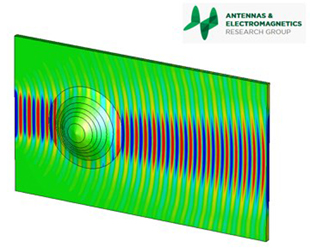Scientists a step closer to making "invisibility cloak" a reality
Could Harry Potter's invisibility cloak be one step closer to becoming a reality? A research team from Queen Mary University of London's School of Electronic Engineering and Computer Science says it has demonstrated a cloaking device that could make curved surfaces look flat when encountering electromagnetic waves.
The demonstration is not quite on par with that seen in J.K. Rowling's wizarding world, but for mere muggles out there, the experiment marked a milestone, and it could have some practical applications in the engineering world.
The research team coated a surface with a nancomposite material consisting of seven different layers with different electric properties for each layer. The result is material that concentrates the electromagnetic wave, "hiding" the object it is covering, which would normally scatter the wave in different directions.
"Previous research has shown this technique working at one frequency. However, we can demonstrate that it works at a greater range of frequencies making it more useful for other engineering applications, such as nano-antennas and the aerospace industry," Yang Hao, study co-author, said in a press release.
The technology is still in its early phases. But the study's lead author Luigi La Spada said that examining the ways electromagnetic waves interact with this material can filter down into innovations in a range of fields.
"Perhaps most importantly, the approach used can be applied to other physical phenomena that are described by wave equations, such as acoustics," he said. "For this reason, we believe that this work has a great industrial impact."

